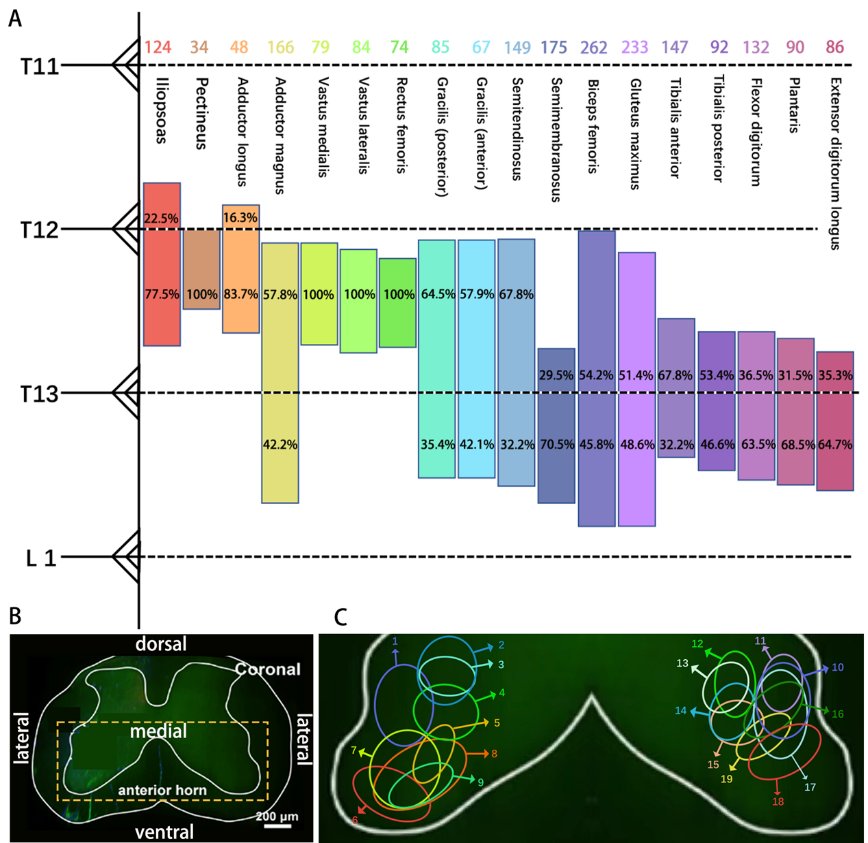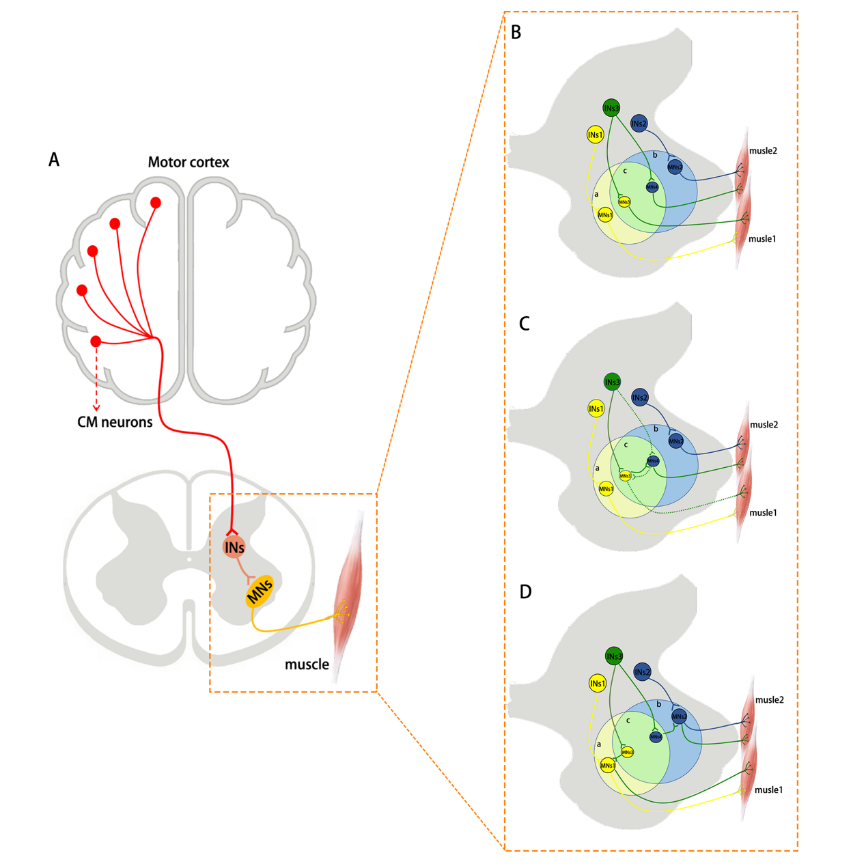中国神经再生研究(英文版) ›› 2024, Vol. 19 ›› Issue (7): 1559-1567.doi: 10.4103/1673-5374.387972
基于小鼠下肢深层肌肉运动神经元可视化三维空间分布的“信使区”假说
A “messenger zone hypothesis” based on the visual three-dimensional spatial distribution of motoneurons innervating deep limb muscles
Chen Huang1, 2, #, Shen Wang1, 2, #, Jin Deng1, 2, Xinyi Gu1, 2, Shuhang Guo1, 2, Xiaofeng Yin1, 2, *
- 1MoE Key Laboratory for Trauma Treatment and Nerve Regeneration, Peking University, Beijing, China; 2Department of Orthopedics and Trauma, Peking University People’s Hospital, Beijing, China
摘要:
骨骼肌的协调收缩依赖于自身与多种脊髓运动神经元之间的选择性连接。然而,目前对支配不同肌肉的脊髓运动神经元的空间分布研究是极为有限的。此次实验结合与溶剂清除器官三维成像兼容(3DISCO)的多重逆行示踪方法,并利用光片荧光显微镜三维成像技术研究了股神经、闭孔神经、臀下神经、腓深神经以及胫神经支配的小鼠后肢深层肌肉不同运动神经元的空间分布和相对位置。此外,实验还提出了“信使区”假说,即在支配协同或拮抗剂肌群的运动神经元池之间存在交错区域(被定义为信使区),其中交错分布的神经元可能作为信使神经元参与肌肉协调。这项研究不仅揭示了支配小鼠不同深层肌肉的多个运动神经元池之间精确的相互位置关系,还更新和补充了支配小鼠肌肉的脊髓运动神经元的系统化三维视觉图谱,而且对于理解协调肌肉活动的潜在机制和运动回路的结构也具有积极意义。
https://orcid.org/0000-0001-9932-642X (Xiaofeng Yin)



